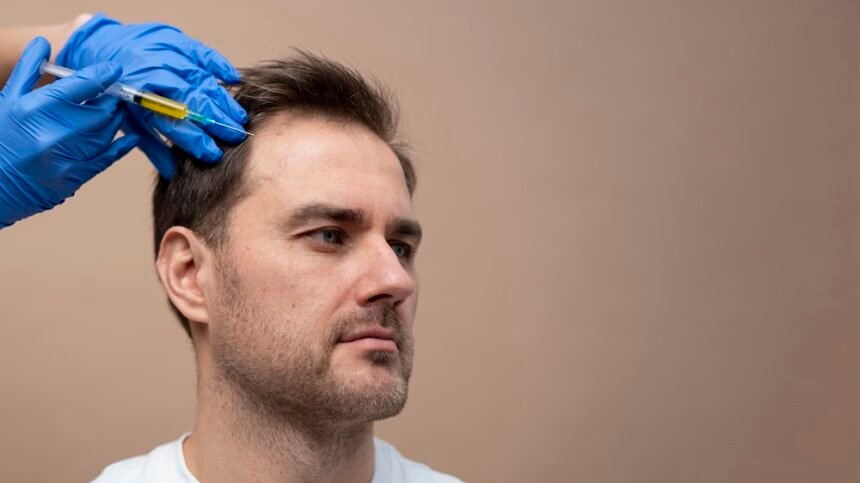Hair loss is something many of us face at some point in life. Some people try shampoos, oils, or clinic treatments, while others look at advanced solutions like transplants.
One option that’s been gaining attention is the stem cell hair transplant, while others rely on traditional hair treatments.
In this article, we’ll break down both approaches so you can see what really works for long-term results.
And yes, we’ll also touch on stem cell hair growth treatment, a phrase you might have already seen in beauty and medical circles.
What is a stem cell hair transplant?
A stem cell hair transplant uses your body’s own cells to help regrow hair. Doctors take a small sample of skin and hair follicles, extract stem cells, and then inject them into areas with thinning or no hair.
The exciting part? Unlike traditional hair transplants, stem cell therapy doesn’t just move hair from one place to another. Instead, it stimulates new growth. Think of it as planting fresh seeds in a garden rather than just rearranging existing plants.
This method is still fairly new, but early studies show promising results for people with male or female pattern baldness.
Pros of stem cell hair transplant
- Natural approach: Since it uses your own cells, the risk of rejection is low.
- Long-term solution: Potential to keep producing new hair even years after treatment.
- Suitable for different hair loss patterns: Can help men and women alike.
Cons of stem cell hair transplant
- High cost: Not affordable for everyone.
- Limited research: Still considered experimental in many countries.
- Availability issues: Only a handful of clinics currently offer it.
What are traditional hair treatments?
Hair treatments come in many forms. The most common include:
- Topical products like minoxidil (Rogaine).
- Prescription medicines such as finasteride (Propecia).
- Laser therapy devices that stimulate scalp circulation.
- Platelet-rich plasma (PRP) therapy, where your blood is injected into the scalp.
- Over-the-counter oils, shampoos, and supplements.
These treatments focus on slowing down hair loss or thickening existing hair. They don’t usually create new hair follicles.
Pros of traditional hair treatments
- Widely accessible: You can start today with over-the-counter products.
- Lower cost upfront: Much cheaper than a transplant.
- Variety: Options range from simple shampoos to advanced PRP therapy.
Cons of traditional hair treatments
- Temporary results: Effects often disappear when you stop using them.
- Side effects: Medicines like finasteride can cause unwanted issues.
- Inconsistent outcomes: Not everyone responds the same way.
The main differences at a glance
Below is a quick comparison to help you see where each option stands:
- Source of results: Stem cell hair transplant encourages new growth, while hair treatments mainly support existing hair.
- Longevity: Stem cell results may last longer, while topical and medical treatments usually stop working if you quit using them.
- Cost: Hair treatments are cheaper upfront, but costs add up over time. Stem cell transplants are expensive initially but might be more permanent.
- Availability: Hair treatments are easy to find at local pharmacies or clinics, while stem cell procedures are still limited to specialized centers.
Which one should you choose?
Here’s the honest answer: it depends on your needs and budget.
If you want a quick, affordable option to slow hair loss, traditional treatments might work. But if you’re looking for something potentially more permanent and don’t mind the cost, a stem cell hair transplant could be worth exploring.
Before deciding, talk to a qualified dermatologist or hair specialist. They can guide you based on your health history, stage of hair loss, and personal goals.

Future of hair restoration
Stem cell technology is evolving fast. In the next few years, we may see more advanced, accessible, and affordable versions of stem cell hair growth treatments. That means more people could benefit from this option without breaking the bank.
Meanwhile, traditional treatments are improving too, with new formulas and devices hitting the market every year.
Frequently Asked Questions
Below are a few frequently asked questions surrounding this topic.
Is stem cell hair transplant safe?
So far, studies suggest it’s safe, but because it’s new, long-term effects are still being monitored.
How long does a stem cell transplant last?
Results may last for years, but since research is ongoing, exact timelines are not guaranteed yet.
Are traditional treatments useless?
Not at all. They help many people, especially in the early stages of hair loss. They’re just not as powerful at creating new growth as stem cell therapy.
Which is better for women?
Both can work, but stem cell therapy might be more effective for women who can’t use certain medications due to side effects.
Final Thoughts
Hair loss doesn’t have a one-size-fits-all solution. Stem cell hair transplants offer hope for permanent regrowth, while traditional treatments provide accessible, everyday support.If you’re considering either option, weigh the cost, availability, and your long-term goals. With science advancing so quickly, the future of hair restoration looks brighter than ever.















